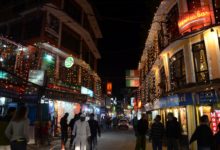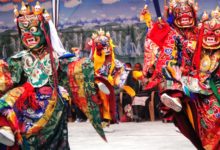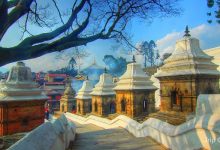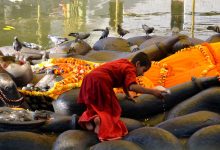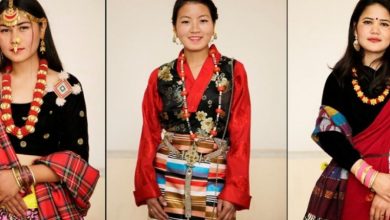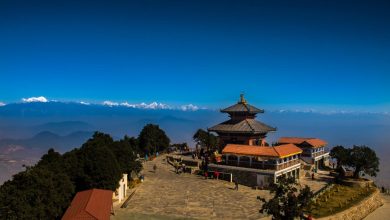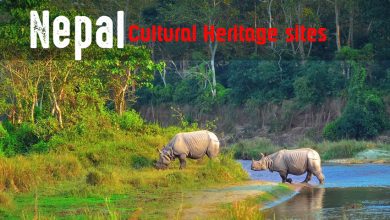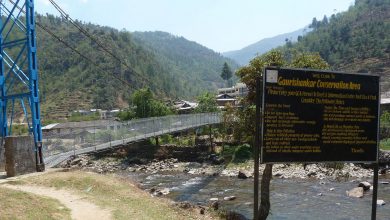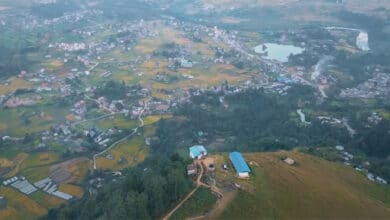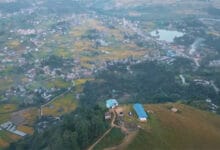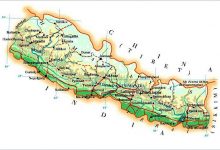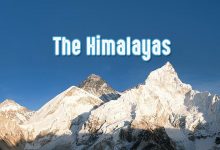Narayanhiti Palace Museum
The Narayanhiti Palace Museum or Narayanhiti Durbar (formerly Narayanhiti Royal Palace), is a palace in Kathmandu
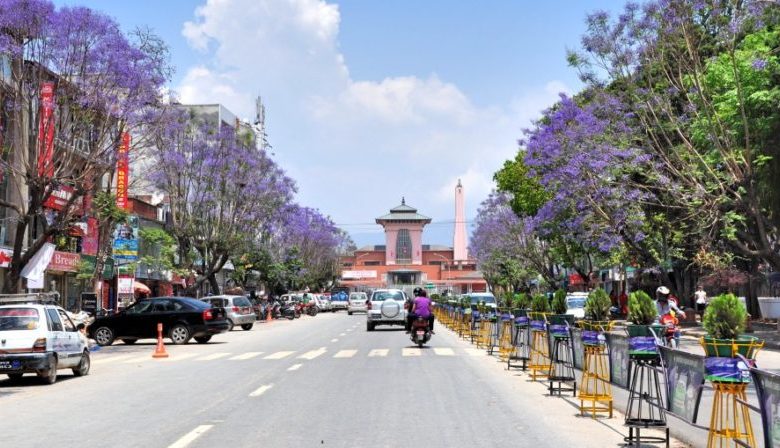
When people ask me what sure to visit in Kathmandu, The Narayanhiti Palace Museum is one of the things that instantly springs to mind. This royal palace built in 1963 is not only a time machine back to the 60’s, it is also the scene of a rather gruesome yet important page of recent Nepali history.
The name, ”Narayanhiti” is made up of two words ‘Narayana’ and ‘Hiti’. Narayan is the Hindu god Vishnu, whose temple is located opposite to the palace. ‘Hiti’ means “water spout” in Newar Language, which is also located to the east of main entrance in the precincts of the palace, a landmark that features prominently in local legends.
The original palace built in 1915 was destroyed during an earthquake and rebuilt in 1960. The palace got converted into a museum when the country became a republic after the 2006 revolution. Regretfully, the historical royal palace was destroyed by the 2015 earthquake. Nepal is currently working to restore the museum but due to the extensive damage this will take a considerable amount of time and funds.
You’ll come across many pictures of visiting dignitaries and the royal family on display in the museum. Walking across the various rooms, visitors can learn more about the lavish lifestyle led by the royals within the palace. The crown jewels in the museum are the most valuable possessions of the country.
Quick Facts
|
Palace |
Narayanhiti Palace Museum |
|
Location |
Kathmandu, Nepal |
|
Coordinates |
27°42’50.0″N 85°18’56.7″E |
|
Construction Started |
1963 AD |
|
Area |
38 Acres/ 753 Ropanis |
|
Owner |
Government of Nepal |
|
Architect |
Benjamin Polk |
History of Narayanhiti Palace
Throughout the new Shah period, the site of the present Narayanhiti Palace was in control by the family of Shreepali Basnet and Kaji Dhokal Singh Basnyat house. The title of the site then changed to different beneficiaries. After Dhokal Singh Basnyat, the site was occupied by Chautariya Fateh Jung Shah (6th Prime Minister of Nepal), his father courtier Choutaria Pran Shah and family.
During Kot massacre of 19 September 1846 both Prime Minister Chautariya, Fateh Jang Shah along with his father Choutaria Pran Shah and brothers were killed and some moved out of Kathmandu.
After this massacre, Narayanhiti Palace was taken over by Jung Bahadur Rana’s brother, then colonel, Ranodip Singh Kunwar. Colonel Ranodip Singh ordered the minor repair of the old palace of Choutaria Pran Shah and used it as his private apartment. After ascending the chair of Prime Minister Maharaja in 1877, the renovation of Narayanhiti Durbar proceeded, but this time it became much prosperous and spread into a multi-wing palace.
During 1934, because of the Nepal-Bihar earthquake, Narayanhiti’s palace partially damaged killing two infants, daughters of King Tribhuvan. Under colonel engineer Surya Jung Thapa, the renovation completed. And a new portico and grand staircase built.
Revered and highly admired by most of the Nepalese, on the first of June in 2001, the queen along with 8 other members of the family died in the massacre. This all took place in an out-building which has now been demolished, there are plaques where each shooting took place. However, the identification of culprit and defendants is not yet made.
Fact of Narayanhiti Palace Museum
Narayanhiti Palace Museum has occupied a total land area of 383850 Mtr. The palace buildings have occupied a total area of 40,820 sq. feet. The rooms & halls of this palace are named after the districts of Nepal and the main entrances of this palace are named after the mountain of Nepal.
There are altogether 52 rooms in this palace including living rooms, private chamber of the royal family, rooms to house the visiting foreign head of state, dining halls, kitchen etcetera. Among rooms & halls of the palace, only 19 are open for public viewing.
Gauri Shankar Gate: The main entrance to the Palace is called Gaurishankar Gate. The Gate is 20 feet high and equally wide. The gate is an impressive example of Nepali woodworks and artistry. After entering through this gate, one reaches the Kaski Hall.
Kaski: This hall called ‘Kaski Baithak was used for receiving the visiting Heads of the States, organizing swearing-in ceremony of the Prime Minister and Chief of Justice, receiving credentials of the New Ambassadors and some other highly important functions.
Myagdi: This room served as a Tea room for the Prime Minister, A Chief of Justice and the ambassadors.
Parbat: In this room, the visiting Heads of the States and Other dignitaries used to sign Visitors’ Book and the Signing Ceremony that would take place after swearing-in and credentials receiving ceremony for ambassadors.
Rukum: This used to be the waiting hall for VIPs seeking an audience with the visiting Heads of the States.
Rolpa: The room served as a place for visiting Heads of the states to have met with the dignitaries. The corridor stretching from the Rolpa to the Baitadi: Photographs of foreign heads of states who stayed in the palace are displayed in the corridor. This tradition was started from the Last Photograph of Late King Mahendra till Late King Birendra.
Dailekh: Bed Room for the visiting Head of the State.
Baitadi: Bed Room for the First Lady of the visiting Head of the State.
Acham: Bed Room for other family members of the visiting Head of the State
Bajura: Dining hall for the visiting Head of the State.
Jumla: This hall was used by the visiting Head of State to rest before & after meals.
Dolpa: This room was used for the members of the royal family to have a view of various programs organized at the Gorkha Baithak.
Tanahun: This hall was assigned for the Council of Ministers, the high ranking royal officials and the secretaries of the Ministries to have a view of the program organized at the Gorkha Baithak.
Gorkha: This hall having a “Ceremonial Throne” with 6 feet length, 4 feet breadth and 8 feet height was used for the Decoration ceremony to the members of the Royal Family and the ceremony to announce the Crown Prince.
Note: The ceremony of the proclamation of the Constitution of Nepal- 1990 AD was also held in this hall)
Mugu: This room was used to house personal collection used by the Late King Tribhuvan.
Lamjung: This Banquet hall was used for the special State Banquet to be given in honor of the visiting Heads of the States and other dinner parties to be organized on the special occasions associated with then kings and queens.
Gulmi: This room was the Private Office of the then King.
Dhading: Room to take rest for the then king
Dhankuta: The Bed Room used by former King & Queen
Dhanusha: This hall was used for organizing “Teeka” ceremony and offering “Teeka” to the high ranking officials on the occasion of Vijaya Dashami and also for conferring on medals on various occasions.
Tribhuvan Sadan: This building built during the reign of Tribhuvan and had many rooms. This was the place where the “Royal Palace Massacre” took place on 1 June 2001 AD (2058 Jestha 19 V.S.). In this place, the bullets were fired on the King Birendra, Queen Aishwarya, crown prince Dipendra, Princess Shruti, Prince Nirajan and some other members and relatives of the royal family. This building was dismantled after the incidents.
Narayanhiti Palace Museum Garden: The garden area contains with the blooming of rare varieties of plants and mass of beautiful flowers. The revolving shade (ghumneghar) and the rounded house (golghar) existed in the area were used for viewing the garden and water fountains around. The rounded house was also a palace for un-officials meetings and reporting to the king.
Entry Fee of Narayanhiti Royal Palace
| Nepali Citizens | Rs 100 |
| Nepali Student | Rs 20 |
| Chinese & SAARC Country | Rs 250 |
| Others | Rs 500 |
NOTE: Free entry for the children up to 3 years old.
Narayanhiti Palace Museum Visiting Hour
| Kartik 16 to Magh 15 – Winter | 11 AM – 03 PM |
| Magh 16 to Kartik 15 – Summer | 11 AM – 04 PM |
NOTE: The Museum will remain closed on Tuesday and Public Holidays.


